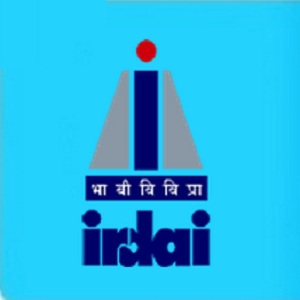Dear Aspirants,
Welcome to Insurance Awareness Questions in AffairsCloud.com. Here we are covering some important Insurance Awareness Questions & Answers with Explanations. Do study this questions thoroughly as it may prove to be helpful in upcoming exams and also in interviews.
- A whole life policy in which premiums are payable as long as the insured lives is called ________
A. Straight Life Annuity
B. Subrogation
C. Straight Life
D. Subjective RiskC. Straight Life
Explanation:
A straight life insurance policy is a type of permanent insurance that provides a guaranteed death benefit and has fixed premiums. This traditional life insurance is sometimes also known as whole life insurance or cash value insurance. - A life annuity in which there is no refund to any beneficiary at the death of the annuitant is termed as ________
A. Straight Life Annuity
B. Subrogation
C. Straight Life
D. Subjective RiskA. Straight Life Annuity
Explanation:
An insurance product that makes periodic payments to the annuitant until his or her death, at which point the payments stop completely. These products do not allow annuitants to designate a beneficiary. - A standing agreement between insurers and re-insurers. Under a treaty each party automatically accepts specific percentages of the insurer’s business is termed as _______
A. Catastrophe Reinsurance
B. Excess of Loss Reinsurance
C. Facultative Reinsurance
D. Treaty ReinsuranceD. Treaty Reinsurance
Explanation:
A pre-negotiated agreement between the primary and the reinsurer. - A form of reinsurance that indemnifies the ceding company for the accumulation of losses in excess of a stipulated sum arising from a single catastrophic event or series of events is termed as _______
A. Catastrophe Reinsurance
B. Excess of Loss Reinsurance
C. Facultative Reinsurance
D. Treaty ReinsuranceA. Catastrophe Reinsurance
Explanation:
Catastrophe insurance is Insurance to protect businesses and residences against natural disasters such as earthquakes, floods and hurricanes, and against man-made disasters such as terrorist attacks. - A type of reinsurance in which the re-insurer indemnifies the ceding company for losses that exceed a specified limit is called _______
A. Catastrophe Reinsurance
B. Excess of Loss Reinsurance
C. Facultative Reinsurance
D. Treaty ReinsuranceB. Excess of Loss Reinsurance
Explanation:
Excess of loss reinsurance is a type of reinsurance in which the reinsurer indemnifies the ceding company for losses that exceed a specified limit. Excess of loss reinsurance is a form of non-proportional reinsurance. - _______ is a form of non-proportional reinsurance.
A. Catastrophe Reinsurance
B. Excess of Loss Reinsurance
C. Facultative Reinsurance
D. Treaty ReinsuranceB. Excess of Loss Reinsurance
Explanation:
Excess of loss reinsurance is a form of non-proportional reinsurance.In this type of Reinsurance premium is calculated independently of the premium charged to the insured. - ________ is reinsurance for a single risk or a defined package of risks.
A. Catastrophe Reinsurance
B. Excess of Loss Reinsurance
C. Facultative Reinsurance
D. Treaty ReinsuranceC. Facultative Reinsurance
Explanation:
Facultative insurance is reinsurance for a single risk or a defined package of risks. - ________ is a type of life insurance policy that provides coverage for a certain period of time, or a specified “term” of years
A. Catastrophe Reinsurance
B. Excess of Loss Reinsurance
C. Facultative Reinsurance
D. Term InsuranceD. Term Insurance
Explanation:
Term insurance is a life insurance product offered by an insurance company which offers financial coverage to the policy holder for a specific time period. - A policy that cannot be cancelled by the insurer prior to a certain age is called ________
A. No-Fault
B. Negligence
C. Non-cancellable
D. None of the AboveC. Non-cancellable
Explanation:
A policy contract that specifies that the insured may continue coverage by paying the premiums for a specific time frame. - A single insurance policy that combines several coverages previously sold separately is termed as __________
A. Package Policy
B. Multiple Policy
C. Combined Policy
D. None of the AboveA. Package Policy
Explanation:
Insurance policy that combines coverage from two or more types of insurance (such as property and liability) into one policy.
Click Here To View Insurance Awareness Questions
AffairsCloud Recommends Oliveboard Mock Test
AffairsCloud Ebook - Support Us to Grow
Govt Jobs by Category
Bank Jobs Notification




